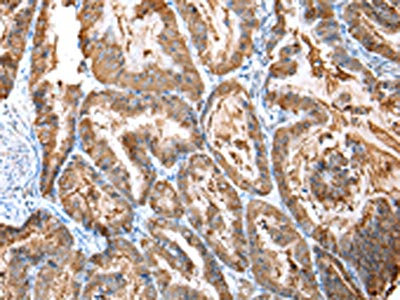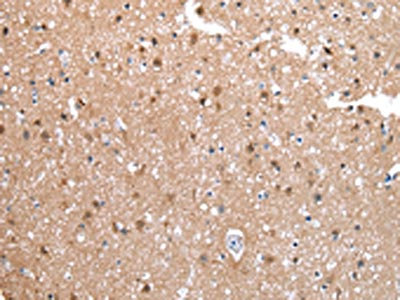
The image on the left is immunohistochemistry of paraffin-embedded Human esophagus cancer tissue using CSB-PA250029(CXCR4 Antibody) at dilution 1/20, on the right is treated with synthetic peptide. (Original magnification: x200)
CXCR4 Antibody
CSB-PA250029
ApplicationsELISA, ImmunoHistoChemistry
Product group Antibodies
ReactivityHuman, Mouse, Rat
TargetCXCR4
Overview
- SupplierCusabio
- Product NameCXCR4 Antibody
- Delivery Days Customer20
- ApplicationsELISA, ImmunoHistoChemistry
- CertificationResearch Use Only
- ClonalityPolyclonal
- ConjugateUnconjugated
- Gene ID7852
- Target nameCXCR4
- Target descriptionC-X-C motif chemokine receptor 4
- Target synonymsCD184; CD184 antigen; chemokine (C-X-C motif) receptor 4; C-X-C chemokine receptor type 4; D2S201E; FB22; fusin; HM89; HSY3RR; LAP3; LAP-3; LCR1; LESTR; leukocyte-derived seven transmembrane domain receptor; lipopolysaccharide-associated protein 3; LPS-associated protein 3; neuropeptide Y receptor Y3; neuropeptide Y3 receptor; NPY3R; NPYR; NPYRL; NPYY3R; SDF-1 receptor; seven transmembrane helix receptor; seven-transmembrane-segment receptor, spleen; stromal cell-derived factor 1 receptor; WHIM; WHIMS; WHIMS1
- HostRabbit
- IsotypeIgG
- Protein IDP61073
- Protein NameC-X-C chemokine receptor type 4
- Scientific DescriptionThis gene encodes a CXC chemokine receptor specific for stromal cell-derived factor-1. The protein has 7 transmembrane regions and is located on the cell surface. It acts with the CD4 protein to support HIV entry into cells and is also highly expressed in breast cancer cells. Mutations in this gene have been associated with WHIM (warts, hypogammaglobulinemia, infections, and myelokathexis) syndrome. Alternate transcriptional splice variants, encoding different isoforms, have been characterized.
- ReactivityHuman, Mouse, Rat
- Storage Instruction-20°C or -80°C
- UNSPSC12352203

